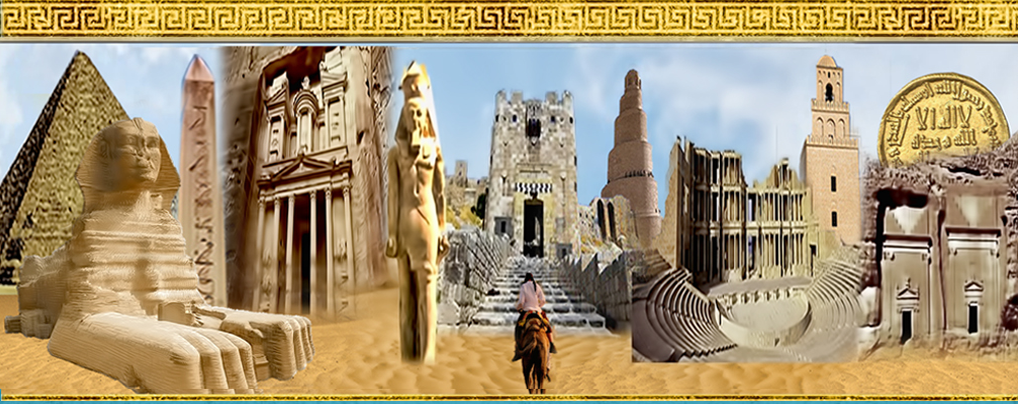Journal of the General Union of Arab Archaeologists

Abstract
التوصيف الفيزيو كيميائي لايقونة السيد المسيح ، كنيسة ابى سيفين ،جمهورية مصر العربية [Ar]قدم هذا البحث التوصيف الفيزوكيميائى لأيقونة قبطية من القرن التاسع عشر من كنيسة القديس مرقوريوس، حيث تمثل مثال فريد من هذة الايقونات التى تعود الى العصر القبطى. ولكى يتحقق الغرض من الدراسة تم استخدام بعض الوسائل الفحص والتحليل لشرح وايضاح كل مظاهر التلف مما يساعد في التوثيق الأثري للأيقونة ، وقد يعطي ذلك تفسير عن ميكانيكة تلف الأيقونات الأثرية . كشف الفحص البصري أن الأيقونة القبطية تتكون من أربع طبقات: دعامة لوح خشبي ، وطبقة تحضير ، وطبقة طلاء ، وبقية طبقة الورنيش ، وقد عانت كل طبقة من ظروف البيئة المحيطة ، وظهر ذلك في العديد من علامات التلف. تم فحص وتحليل العينات المأخوذة من أماكن مختلفة عن طريق الفحص باستخدام الميكرسكوب الإلكتروني الماسح المجهز بكاشف الأشعة السينية المشتت للطاقة (EDS) والتحليل الطيفى بالاشعة تحت الحمراء فورير " FTIR" وحيود الأشعة السينيةXRD " " أظهرت نتائج التحليل الطيفى بالاشعة فوق الحمراء للعينة الأثرية أن الطبقة الأرضية تتكون من الجبس والطباشير والغراء الحيواني كمادة رابطة. أشارت أطياف XRD إلى مصادر الأصباغ المستخدمة في رسم الأيقونة ، وتم تحديد المادة الملونة الحمراء من أحمر الرصاص ، وبالنسبة لمادة اللون الازرق من الالترامارين ، و المادة الملونة البيضاء من الرصاص الأبيض ، والمادة الملونة البنية كانت من أكسيد الحديد ، بالإضافة إلى استخدام صفار البيض كمادة رابطة في طبقة الطلاء والورنيش المستخدم كان من راتنج الشيلاك. ثم تم الكشف عن حالة التدهور ، وفقًا لنتائج SEM ، والتي أظهرت بوضوح وجود بقع وسناج وشمع وتشققات وثقوب في الطبقة السفلية من الأيقونة ، وتراكم الغبار وطبقات الورنيش الداكنة على الطبقة العليا.
[EN] This research presents a physiochemical analysis of a Coptic icon from church of Saint Mercurius that back to the 19th century. Identified deterioration phenomena were illustrated using various examination and analysis tools in order to fulfill the study's objectives. So as to find an explanation for how ancient icons were damaged. The visual inspection revealed that the Coptic icon is made up of four layers: the wooden panel support, the preparation layer, the painting layer, and the remaining varnish layer, Each of these layers suffered from surrounding environment, appearing in various signs of damage in the visual assessment. Samples taken from different places were investigated and analyzed by using scanning electron microscope equipped with an energy dispersive X- ray detector (EDX), FTIR, and X- Ray diffraction. The results of FTIR analysis revealed that the ground layer consists of gypsum, chalk and animal glue. XRD spectra confirmed that the red pigment was red lead , blue pigment was ultramarine, white pigment was white lead, and brown pigment was iron oxide (burnt sienna), in addition to the use of the egg yolk as a binder in the painting layer and the varnish was shellac resin. The state of deterioration was detected, according to the SEM results, which show clearly the presence of stain, soot, wax ,cracks and lacunae at the lower layer of the icon, and accumulation of dust and darkening of varnish layers on the upper layer.
Recommended Citation
Kamal, Neven; Abdelaal, Shaaban; and HENIN, Emil
(2023)
"PHYSIOCHEMICAL CHARACTERIZATION OF COPTIC JESUS CHRIST ICON, CHURCH OF SAINT MERCURIUS, EGYPT,"
Journal of the General Union of Arab Archaeologists: Vol. 8:
Iss.
1, Article 11.
Available at:
https://digitalcommons.aaru.edu.jo/jguaa/vol8/iss1/11
Included in
Historic Preservation and Conservation Commons, History Commons, History of Art, Architecture, and Archaeology Commons

